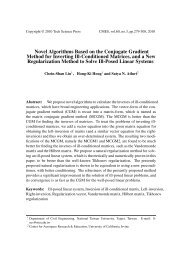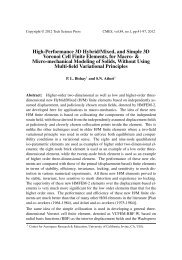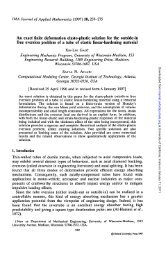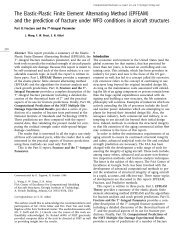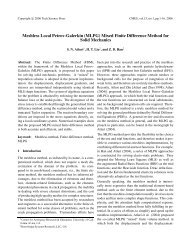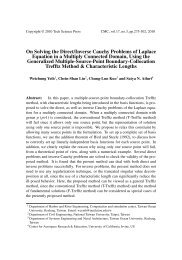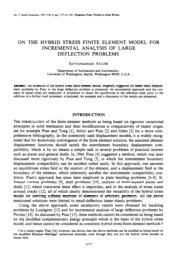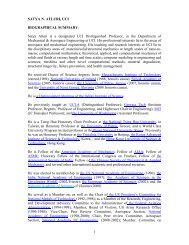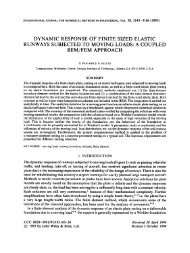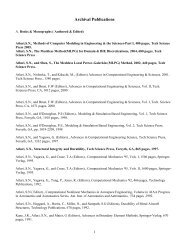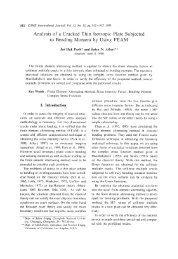A Scalar Homotopy Method for Solving an Over ... - TechScience
A Scalar Homotopy Method for Solving an Over ... - TechScience
A Scalar Homotopy Method for Solving an Over ... - TechScience
You also want an ePaper? Increase the reach of your titles
YUMPU automatically turns print PDFs into web optimized ePapers that Google loves.
52 Copyright © 2009 Tech Science Press CMES, vol.53, no.1, pp.47-71, 2009ODE <strong>for</strong> x as written in Eqs. (3) <strong>an</strong>d (4). However, since the equation written inEq. (19) is a scalar equation <strong>an</strong>d it c<strong>an</strong>not determine the ODE <strong>for</strong> x unless oneprescribes a certain <strong>for</strong>m <strong>for</strong> dxdt. In plasticity theory, the normality condition, orequivalently the “stability” of the material “in the small” was originally derived byDrucker <strong>an</strong>d Ilyushin, based on the inequality of the plastic work (that it should be≥0). A similar motivation <strong>for</strong> the use of the normality condition <strong>for</strong> dxdtis based onthe stability of solutions. We note that the <strong>for</strong>m of dxdtneeds to be parallel to thegradient of the above scalar homotopy function, such that the trajectory of x c<strong>an</strong> beequivalent to seeking of h(x, t)=0. We propose here to usedxdt = −q∂h ∂x , (20)in which the gradient of h is assigned to be the driving <strong>for</strong>ce to adjust x. In <strong>an</strong><strong>an</strong>alogy to the theory of plasticity, Eq. (20) may be considered to be the “flowrule”,<strong>an</strong>d we will introduce the similarity between them, later. It c<strong>an</strong> be seen thatq =∥∂h∂t∥ ∂h∂x∥ 2 (21)by substituting Eq. (20) into Eq. (19), where∂h∂t = 1 [‖F(x)‖ 2 + ‖x − a‖ 2] , (22)2∂h∂x = tBT F − (1 −t)(x − a). (23)B := ∂F∂xis usually called the Jacobi<strong>an</strong> matrix of the NAEs. Hence, we c<strong>an</strong> writethe nonlinear ODEs <strong>for</strong> x as:ẋ = −∥∂h∂t∥ ∂h∂x∂h∥ 2 ∂x . (24)Now we will make <strong>an</strong> <strong>an</strong>alogy to the plasticity theory. In the plasticity theory, wehave the associated flow rule given by [Liu <strong>an</strong>d Ch<strong>an</strong>g (2004)]ė P =˙λ∂h∂x , (25)where ė P denotes the plastic strain rate, h is the yield function <strong>an</strong>d x relates to thestress state. Then by assuming <strong>an</strong> unit elastic modulus, the evolution of stress x is



